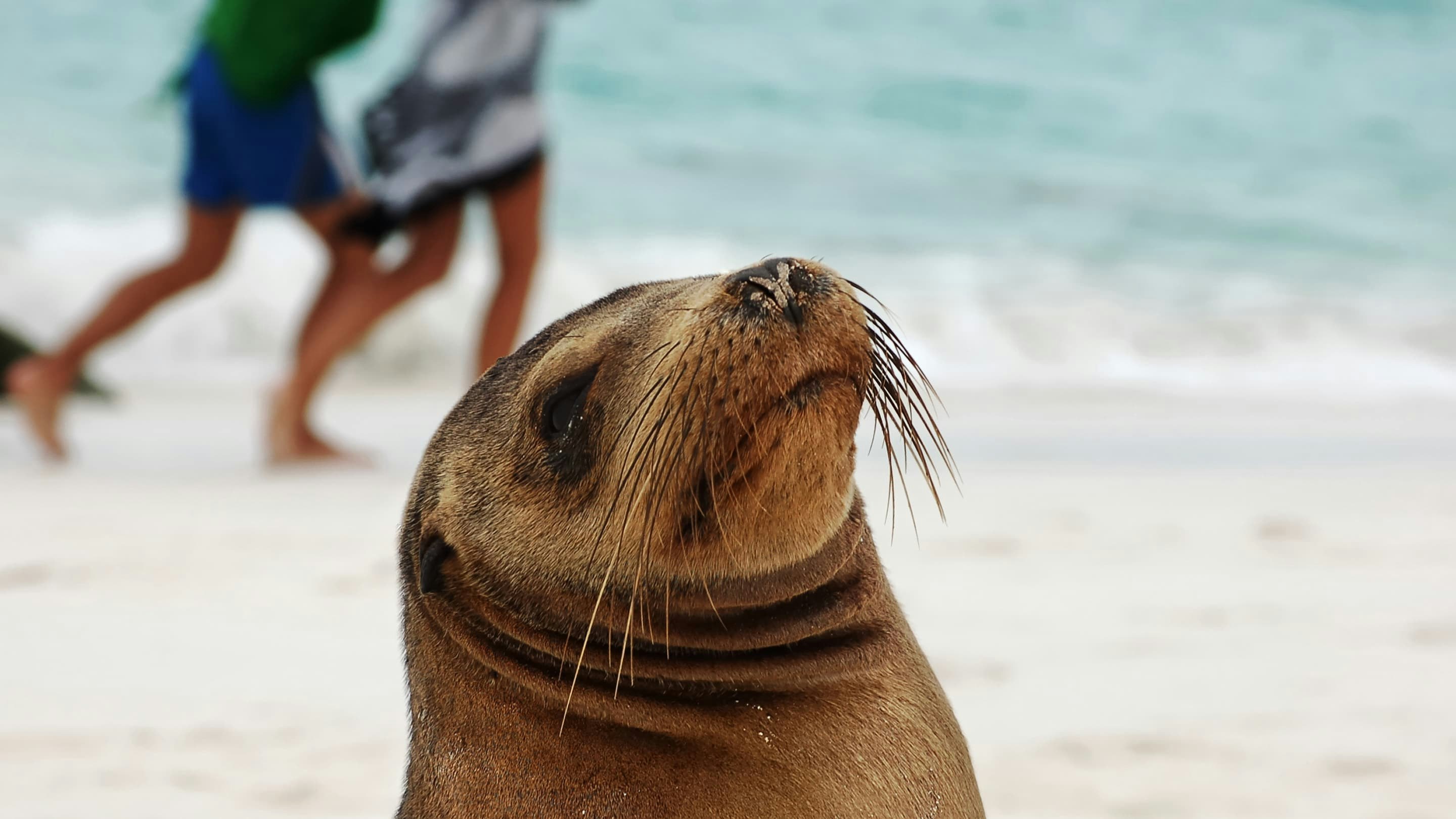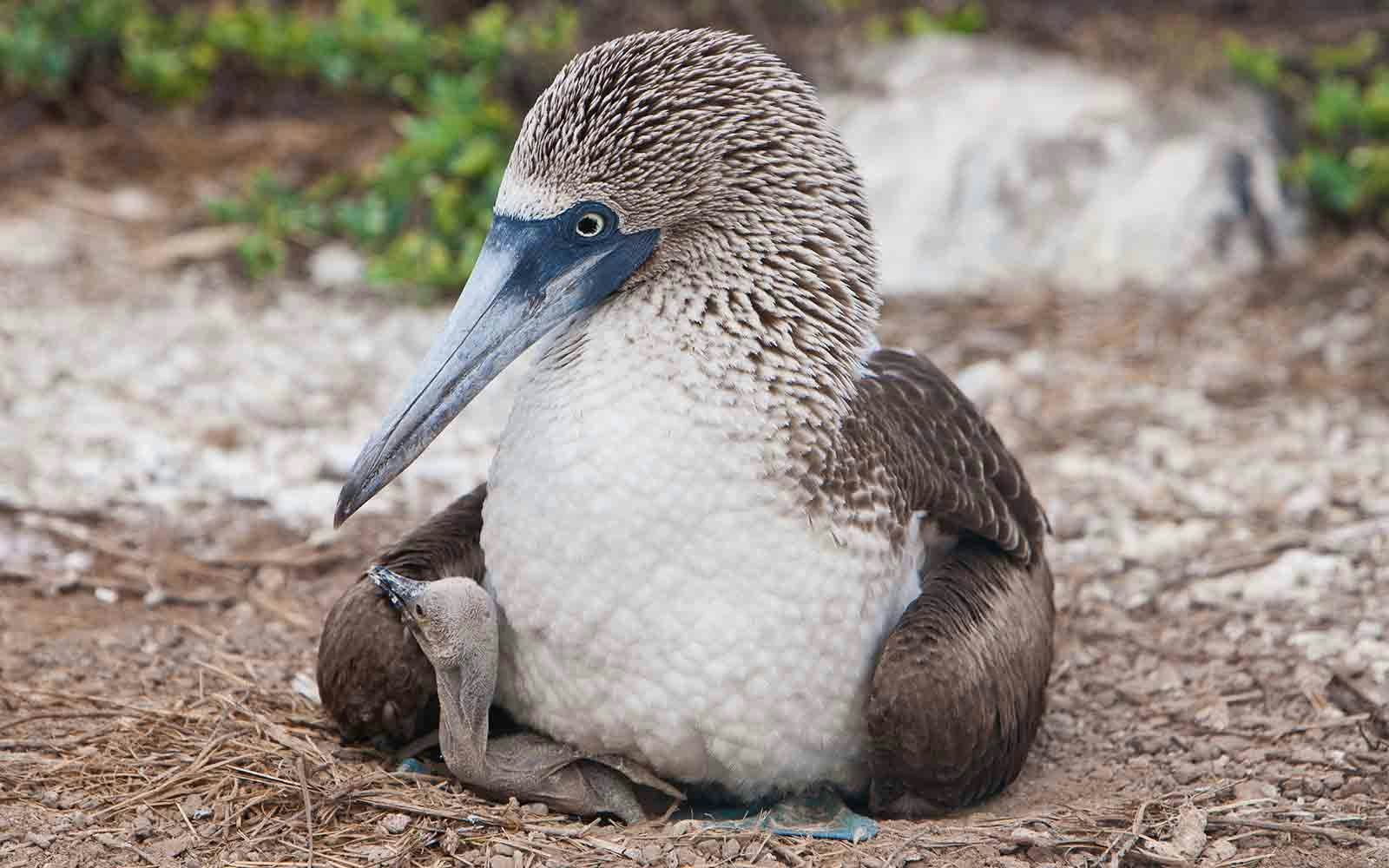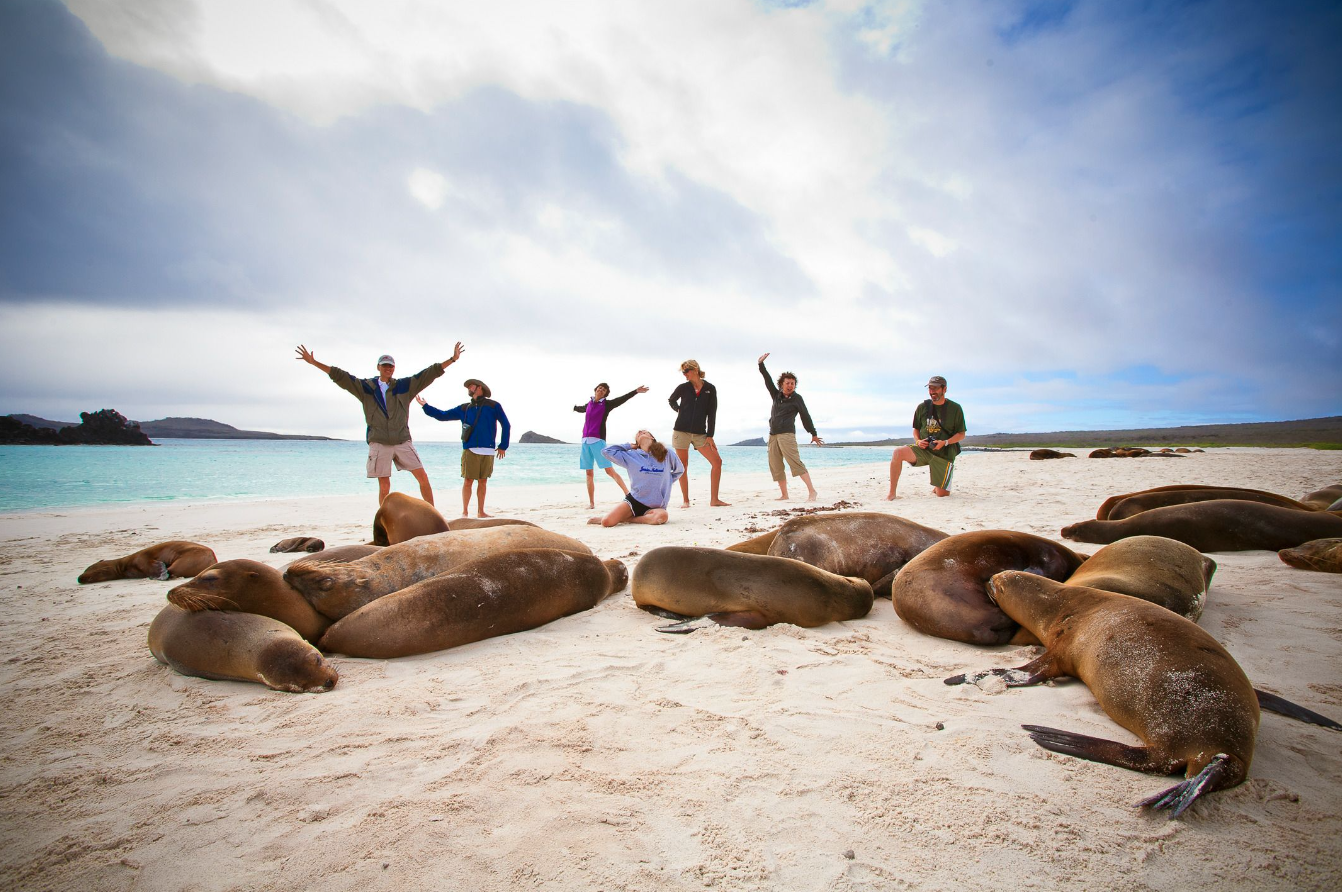Best Time To Visit the Galapagos Islands

The Galapagos Islands are a wildlife-rich destination to explore! If you’re planning a trip, it’s important to know when the best time to visit is. In this article, we’ll learn about the different seasons in the Galapagos and how they affect wildlife viewings and weather. By understanding the timing of your visit, you can make the most of your adventure!

Does the Galapagos Islands have four seasons?
The Galápagos Islands straddle the equator, which means that they are a year-round wildlife destination with just two seasons: the warm/wet and the cool/dry. The air temperature during the seasons doesn’t change much and generally hovers around the 70s, dipping into the 60s in the cool months and reaching the low 90s in the warm months. In terms of tourism, the peak seasons are generally mid-June to early September and mid-December through mid-January—the classic holiday periods.
Let’s see how these seasons differ!

The Warm/Wet Season (Falls through December through May)
This is the sunniest and warmest time of the year, with the Panamic Current ushering in warmer daytime temperatures that reach the upper 80s and low 90s. Rain showers may be frequent but the waters are generally calm and clear, and the rainfalls are short and welcome. The peak rainfall month is March. The water during this season is perfect for snorkeling and viewing the green sea turtles that come to the islands to breed. Flowers begin to bloom once the rain subsides in late March and April. This is also the breeding season for land birds, so a great time to see their mating rituals!
Great time for spotting these wildlife:
- Nesting iguanas and brightly colored marine iguanas
- Nesting land birds, including the Galápagos dove
- Giant tortoise eggs hatching
- Green turtles laying eggs on beaches (January) and hatching (in April)
- The arrival of the waved albatross on Española Island (April to November)
- Galápagos penguins on Isabela Island
- Mating rituals of frigate birds and the waved albatross
- Migrating humpback whales and whale sharks (June to September)

The Cool/Dry Season (Falls through June through November)
The cooler waters of the Humboldt Current bring a rich oceanic upwelling to the Galápagos that stimulate the breeding season for sea lions and seabirds. During the cool season the daytime temperatures are generally in the 70s, meaning comfortable short-sleeve weather for hiking, and the water temperature is in the 60s (a wetsuit is recommend for snorkeling). As this is the height of the breeding season, it’s the best time of the year for viewing dancing boobies, courting albatrosses, baby sea lions, whales, dolphins, and whale sharks. There is usually a fog that drifts in and out (known locally as garúa) and a one- to-two-foot chop in the ocean, but this remains a great time to visit for wildlife.
Great time for spotting these wildlife:
- Whale sharks, whales, and dolphins
- Courting and nesting of flightless cormorants, flamingoes, and penguins
- Active blue-footed boobies, including chicks
- Frigate bird chicks
- Mating lava lizards
- Giant tortoises returning to the Santa Cruz highlands
- Galápagos sea lion pups
- Giant tortoise eggs hatching (December to April)

Travel Tips for Traveling to the Galapagos
To make the most of your Galapagos adventure, consider the following factors!
- Wildlife Interests:
- Determine which animals you want to see most
- Plan your visit accordingly to their breeding and nesting seasons
- Activities:
- If snorkeling and diving are a priority, opt for the dry season
- Hiking and exploring the islands are possible year-round
- Budget and Crowds:
- High season (June to August, December) is more crowded and expensive
- Shoulder season (April, May, September, October) offers a good balance
In Conclusion
By understanding the seasons and wildlife patterns, you can choose the best time to visit the Galapagos Islands. Whether you want to witness courtship dances, swim with sea lions, or marvel at giant tortoises, each season has its own unique experiences. Remember to plan ahead, pack accordingly, and be respectful of the fragile ecosystem. The Galapagos Islands await your visit, so start planning your adventure today!

Click here to check out our wildlife adventure gallery or here for our amazing Galápagos itineraries!
Ask an Expert
We want you to have the best adventure, so don’t hesitate to call our expert team of adventure specialists at 800-974-0300 to learn more. Or click the button to use our online contact form.